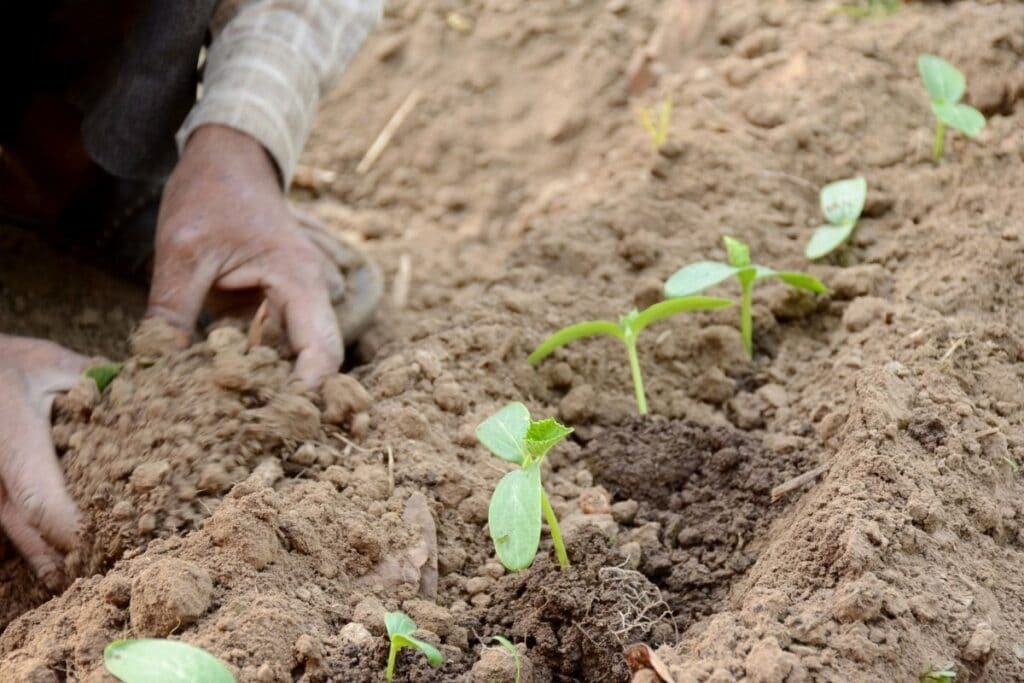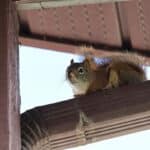The land comprises a quarter of the earth’s surface. We grow on it, build on it, and build almost everything from it. The soil is an essential part of the land. It is a non-renewable resource made up of minerals, organic matter, air, water, and living organisms. Looking deeper, there’s more about the ground than just a place where we stand.
Everything that we eat that does not come from the ocean comes from the ground. We have observed in the past how civilizations and society moved from one place to another because the field where they live had lost its ability to produce food. Their farmlands had been degraded and the nutrients were washed into the rivers.
Until now, most farmers only know the chemical and physical aspects of the soil and the rest are about taking care of the crops. They keep on digging and turning the land, adding fertilizers, spraying pesticides, and implementing monocropping systems. But what they do not know is that the soil is actually alive and is breathing. It is very far from being just dirt.
Live Soil Contains a Wealth of Biodiversity
Children can easily pinpoint what a jellyfish is from a seahorse, starfish from a stingray, and dolphins from an octopus. But what about the creatures that live just under our feet?
Similar to the ocean, under the ground is a house for many species. In fact, it is estimated that a teaspoon of soil has a billion bacterial cells, millions of fungi, hundreds of nematodes, and several earthworms, mites, and arthropods in it. That is a lot of biodiversity hidden below the surface of the planet!
Soil biodiversity refers to all the existing life forms, regardless of size and shape, found in it. These creatures keep on moving, producing, and functioning both as an individual or as a group of the same classification. Below is a list of organisms that can be found living under our footsteps:
Bacteria
Bacteria are single-celled microorganisms. They are the most populated species in the living soil. Their size is similar to clay particles which are smaller than 0.002mm. They can be classified in many ways. In terms of shape, they are grouped as rodlike, spherical, or spiral. Other bacteria need oxygen to survive and they are called aerobic bacteria. Contrary, other species would require an environment without oxygen and are termed anaerobic bacteria.
In a laboratory, scientists use a staining agent to color bacterial cell walls. If the cell walls are thick, they labeled it “gram-positive” indicating that these bacteria can withstand water stress conditions. On the other hand, gram-negative bacteria are usually smaller and do not retain the color of the staining agent. With new discoveries, more classifications arise including the environmental conditions they live in, mode of growth and development, and DNA sequence.
Bacteria play important functions in the soil primarily related to nutrient cycling, water infiltration, and disease suppression. Some species feed on dead organisms and organic litter, and further break them down into simpler forms such as water, carbon dioxide, nitrogen, phosphorus, potassium, and calcium. Others are involved in nutrient cycling specifically in converting nitrogen from the atmosphere to compounds readily available for uptake by plants.
Some bacteria produce glue-like substances that make soil particles sticky to bind with other particles forming aggregates. The aggregation of the soil improves the movement of water, especially in clay soil.
Lastly, the presence of certain species of bacteria is just enough to combat the ability of certain pathogens to produce diseases in plants. Below are the most common bacterial species:
| Species | Function |
| Azotobacter | Converts atmospheric nitrogen to ammonia |
| Azospirillum | Involved in nitrogen-fixing, produces phytohormones in small amounts, solubilizes inorganic phosphorus |
| Rhizobium | Attaches to roots of legumes to form nodules; the nodules convert atmospheric nitrogen to nitrogen forms the plant can use |
| Bacillus pumilus | Active ingredients in fungicide; prevents Rhizoctonia and Fusarium spores to germinate |
| Pseudomonas fluorescens | Protects seeds and roots from fungal infection; breaks down proteins and lipids of dead plants and animals |
| Xanthomonas | Produce enzymes that break down cellulose, hemicellulose, and pectin |
Fungi
Fungi are either single-celled or multicellular microorganisms. They have white to yellow root hair-like structures which are called hyphae. Hyphae are responsible for the release of enzymes and the absorption of food for the fungus. They reproduce asexually by spores which are dispersed in the air current via triggers, propulsions, springs, and scents.
Similar to bacteria, fungi perform important functions within the soil. These functions include the decomposition of organic materials, plant nutrient uptake, improvement of plant resilience, and formation of soil aggregates.
Many fungi play roles in the carbon and nitrogen cycle as decomposers. Their specialty is the decomposition of hard woody organic matter or those that are made up of lignin. As fungi break down these organic materials to get their food, they can either release carbon into the atmosphere or store it in the soil. In the process, other essential nutrients are also immobilized.
A group of fungi which is called mycorrhizal fungi develops a special relationship with certain plant roots. They grow themselves inside the roots which enable the plant to obtain nutrients through the hyphae such as phosphorus in a wider range.
The fungal mass also hides the roots from other pests and pathogens. As fungi grow, the hyphae hold together the soil particles creating stable aggregates that enhance water drainage and water holding capacity.
| Species | Function |
| Mycorrhizal fungi | Group of fungal species that collect sugar from plant roots, in exchange they facilitate the host plants to get more nutrients and grow vigorously even under stressful conditions |
| Penicillium bilaiae | Releases organic compounds that can liberate soil-bound phosphorus |
| Gymnopilus junonius | Responsible for breaking down and recycling dead plants and animals |
| Pilobolus | Feed directly on the dung of herbivores |
| Pleurotus ostreatus | Preys on soil nematodes by paralyzing them with calcium-dependent toxins |
| Trametes | Good for decomposing stumps and wood of trees |
Nematodes
Soil nematodes are worm-like organisms that live in water-filled pore spaces. Their structure is very simple, containing more or less 1000 cells. The transparent body is described as a tube within a tube.
They are more known as pests causing root knots as they feed on the roots of vegetables and other economically-important crops. Nonetheless, some species are not parasitic on plants and are rather beneficial to the soil ecosystem.
Soil nematodes can be classified based on what they eat, which is also evident by the structure of their mouthparts. They can either feed on bacteria, fungi, protozoa, or other species of nematodes. They are also parasitic on some insects and plants.
In a food web, they are also a source of energy for arthropods and other larger organisms. Their presence also contributes to the availability of nitrogen for plant uptake, enhancement of the decomposition process, and the dispersal of fungal and bacterial organisms within the soil.
| Species | Function |
| Steinernema carpocapsae | Controls population of black vine weevil larvae in a laboratory setup |
| Heterorhabditis bacteriophora | Suppress population of common turf grubs |
Arthropods
Arthropods are recognized for their roles of shredding organic matter, stimulating microbial activity, mineralizing plant nutrients, enhancing soil aggregation, and controlling pests. Animals belonging to this group do not have backbones but do have an outer skeleton made of chitin which is called an exoskeleton.
The size of the segmented bodies of arthropods ranges from microscopic to several inches that can be easily seen by the naked eye. The group includes insects, spiders, scorpions, and myriapods.
| Species | Function |
| Springtails | Decompose plant litter, stimulate the activity of mycorrhizal fungi, promote absorption of phosphorus, form stable soil aggregates |
| Millipedes | Feed on detritus and leave casts rich in nutrients; enhance aeration |
| Centipedes | Munch on dead plants; create burrows and tunnels; leave casts rich in nutrients |
| Sowbug | Use their strong mouthparts to chew leaf litter and plant residues into fragments |
| Mites | Break down organic materials; have a mutualistic relationship with fungi |
| Ants | Create burrows; seed dispersal; accelerates decomposition process; ant mounds are also rich in nutrients |
| Termites | Break down tough plant fibers and wood trunks; create burrows and tunnels; secretes sticky substances that hold soil particles preventing erosion |
| Scarab beetles | Pollinators; used in biological control of dung flies; bioindicators of good soil health |
| Ground beetles | Beneficial predators; create burrows underground which aerate and improve water movement; contribute to the mortality of weed seeds |
| Isopods | Enhance activity of microbes; aids in the decomposition of detritus |
| Symphyla | Make nutrients available for plant growth; feed on fungi and decayed organic materials |
Earthworms
Earthworms are invertebrates with a lifespan of up to 8 years depending on the species. Their body is composed of segments called metamerisms which contain pores that release a certain kind of fluid. This lubricant moistens the worm enabling it to absorb oxygen through its body as they do not have a nose and lungs similar to other animals.
They are considered the early plowers of the earth. They create burrows as they journey deep to the ground. By doing so, they improve soil structure that allows water and air to pass through. They also feed on organic materials, concentrate the nutrients in their body, and release it as casts. The presence of earthworms also supports a lot of other organisms because it is a key player in the food web.
Mammals
Mammals are vertebrate animals characterized by having mammary glands that produce milk to feed their young. Some mammals who rely on the soil for their protection, habitat, and food source. Because of their relatively large size in comparison to other organisms, they can change the landscape and topography by their digging. Such activities have significant contributions to the soil environment.
One example of these animals is the moles. They are like engineers who spend their time creating homes underground. They dig tunnels below the surface and create traps for earthworms and invertebrates. Such a sneaky way of preparing their festive meal!
But as they do this all day and all night, they provide pore spaces for water and air to enter the ground. They also bring the organic matter to the deeper parts as they move along. Other mammals that live permanently or are just transient in the soil are pangolins, gophers, mice, shrews, prairie dogs, and aardvarks.
Ever wonder how these species survive underground? They have developed special adaptations to live comfortably below the surface. These may include tube-shaped and velvety bodies to move faster and easier in tunnels and burrows, strong feet and claws to dig deep down, enlarged sharp front teeth for munching litter, long snouts, and heightened sensory organs.
Importance of soil biodiversity
The health of the soil is dependent on the variety of living organisms that live in it.
These organisms play critical roles, functions, and services primarily nutrient cycling, carbon-storing, and securing the availability of clean water and food. The soil ecosystem also supports life in other terrestrial ecosystems. However, it is not getting the attention it deserves.
The soil fosters a substantial fraction of the world’s biodiversity but only 1% of all the microorganisms have been fully identified. The soil ecosystem function has not yet been analyzed in-depth and studies about soil biology have just emerged in the last decades. Yet, the rise in the global population has continually increased the demand for housing and food production. We have utilized the soil for a very long time without realizing the life it has and its fragility.
Threats to soil biodiversity
Topsoil takes a hundred years to create and the organisms that live in it are the original workers, architects, supervisors, and engineers. The significant loss of soil biodiversity weakens the ability of the soil to oppose disturbances, maintain productivity, and provide services to support life aboveground. This section will discuss the causes of soil degradation and biodiversity loss:
Erosion
Although erosion is a natural process carried by wind and water, it strips off portions of the soil surface and causes damage to the organisms living below. Removal of existing vegetation exacerbates the effects brought by erosion.
Salinization
Salinization happens when water-soluble salts accumulate in high amounts. This is toxic to the vegetation and can kill soil organisms. Activities of microorganisms such as bacteria become dormant when the salt level rises.
Loss of organic matter
The depletion of soil organic matter starves living organisms. The sudden conversion of forest areas or native vegetation to agricultural lands greatly contributes to the stripping off of organic matter.
Compaction
The use of heavy machinery during farming causes air to be squeezed out of the soil. The process also destroys the tunnels and burrows made by earthworms and other animals. The movement of water and nutrients is restricted and soil organisms are suffocated.
Soil sealing
Urbanization resulted in the sealing of the earth’s surface. Roadworks and other infrastructures cover the soil which creates a boundary between the below-ground and above-ground environment. Compaction during construction also causes the death of many organisms.
Chemicals
Improper disposal of chemicals such as heavy metals is toxic for soil organisms. Many of the animals living underground are highly sensitive to changes in their environment including pollution. Active ingredients found in certain fertilizers and pesticides can also be poisonous.
There’s a growing political and scientific interest in the research of soil biodiversity. However, few efforts have been made to create policies that will take care of soil ecosystems. It is now apparent how our soil has been degraded through time, but the ability of these organisms to bounce and revitalize what has been lost is still pronounced. The growing awareness has led some farmers to shift to the sustainable practice of producing food, with the hope of protecting and conserving soil biodiversity.
*image by Wirestock/depositphotos







